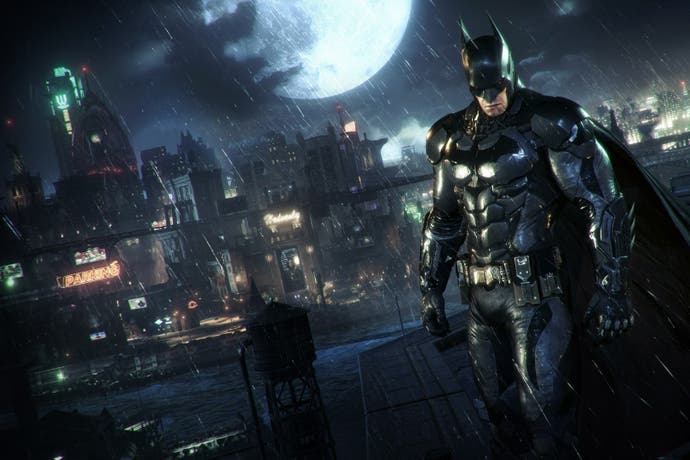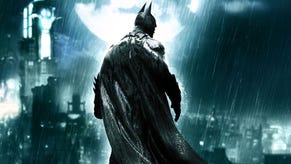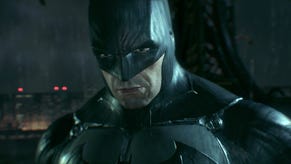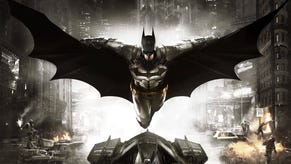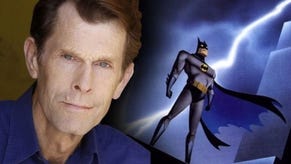Why the Batman: Arkham Knight delay was a good thing
Rocksteady refuses to cut corners - and that's good news.
When news emerged that Batman: Arkham Knight had been delayed to 2015, my gut reaction was disappointment.
I'm a huge fan of Rocksteady's Arkham games, and the development team's first PlayStation 4 and Xbox One effort was a tantalising proposition I was looking forward to getting stuck into later this year.
But now I've had a chance to think about it a bit more - and play the game for a good 40 minutes at E3 last week - I'm less disappointed by the delay. In fact, I'm more excited by the kind of game it will enable.
Rocksteady had already talked about the size of Arkham Knight's open world: five times bigger than Arkham City and a whopping 20 times bigger than Arkham Asylum. The problem is, when you create such a huge game you have to fill it with stuff to make sure there's plenty to do and it feels vibrant and alive. Otherwise you end up with a ghost town. A huge and probably very pretty one, but a ghost town nonetheless.
Filling a gargantuan game world with stuff is a huge job for any developer. That's why Rockstar takes so long and spends so much money doing it in Grand Theft Auto. For Rocksteady, the prospect is equally daunting because of the Arkham series' trademark high-density detail. Rocksteady is a stickler for packing its Batman games to bursting point. There's always something to look at, to inspect, to admire, be it incidental detail on a wall or a hidden room home to an Easter Egg. And it isn't willing to sacrifice its reputation with this, the final game in the Arkham series.
"It's going to be the level of detail, really," Rocksteady's lead animator Zafer Coban tells me, when I asked him how Batman Arkham Knight will be a better game as a result of the delay.
"We're so concerned about bringing out the final instalment and making sure it fits the bill in terms of the quality range we've been delivering with the last two games. Our attention to detail is pinnacle. So we've had to do that for our last instalment and make sure it works across the whole board."
When Coban mentions "the whole board", what he's talking about, really, is the new Gotham City and all it involves, from side stories to combat, from structures to the way the Batmobile works within it. He mentions the word "refinement" - that is, making sure all of Gotham City's moving parts work together to create a smooth open-world experience.
One of those moving parts - a blistering fast moving part - is the Batmobile, which Batman can call upon at any time. Summon the Batmobile and it comes tearing around the nearest corner, no matter where you are in Gotham, and Batman leaps into it as it swerves into position. It's an impressive, seamless movement, a coming together of man and machine where neither party breaks stride.
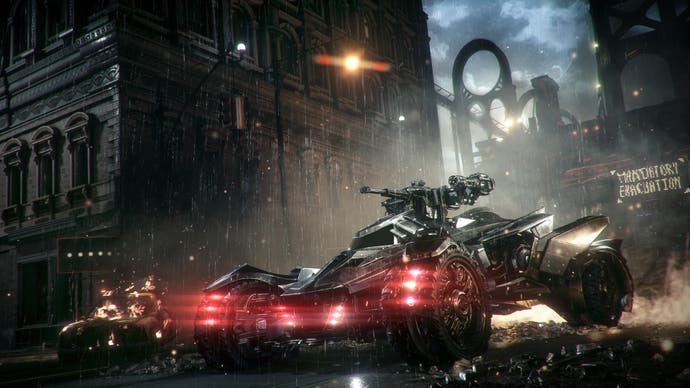
The two part ways in similar fashion. Build up enough speed with the Batmobile and you can send Batman flying out of it for a long-distance glide. From there you might be able to glide over to hard-to-reach platforms, or crash through a window for a flying takedown. Playing the game, it all just works - leaping in and out of the Batmobile, transitioning from driving to melee combat, exploration one second, breaking bones the next. "We have to make sure the Batmobile really fits in with every single element we've introduced," Coban says, further explaining the delay.
The Batmobile, when in battle mode, operates like a fast-moving tank. You can strafe extremely quickly, which lets you dodge incoming fire from the many drones loitering around the city streets at the Arkham Knight's behest. The battle-mode Batmobile packs a punch, too. When it detects you're fighting an unmanned drone it powers up its weapons, including the heavy cannon and the vulcan cannon. There's also a missile barrage attack, but to activate it you need to avoid getting hit long enough to power up a meter, displayed under the cannon's targeting reticule.
Batman doesn't kill people, of course, so if the Batmobile detects thugs are about, it switches to the riot suppressor. And here's the thing: you can call the Batmobile riot suppressor even when in melee combat. If you've got enough combo, and you punch a thug into the air, you might get the button prompt for a riot-suppressor takedown. Trigger it and the Batmobile screeches into view, smashing a rubber bullet into the face of Batman's poor victim.
Then, there is the jump to the PlayStation 4 and Xbox One, which has meant further detail can be - and therefore should be - added. I found this most pronounced in Batman himself. His face is wonderfully detailed, as you'd expect, but it's his suit that stands out. There are a number of moving parts to it, as well as a cape that changes shape depending on what you're doing. If you're gliding into a dive, for example, it morphs one way. If you're swooping into an uplift it morphs another way. It looks lovely in the rain, too.
It's easier to see the extra detail in Batman's model when you're watching a cinematic, but Arkham Knight uses the same graphics for both gameplay and cut-scenes. The seamless - there's that word again - transition between the two is part of what makes Arkham Knight next-gen, Coban says. You'll also notice the Gotham streets are packed with thugs and tank battles. There are side missions, Riddler puzzles and plenty of Easter Eggs. "There's a lot going on," says Coban.
"The attention to detail has to be there in every corner."
Combat, too, has benefited. I love the Arkham games' rhythmic, weighty combat system, and it's good to see for Arkham Knight that Rocksteady has focused on making subtle improvements rather than sweeping changes. The idea was to inject melee with a bit of pace, making it even more fluid. So, you can strike enemies while they're down to keep your combo going, pick up their weapons to use against them, trigger environmental takedowns and, my personal favourite, have a go at fear takedowns.
The fear takedown is where Batman can surprise an enemy, perhaps by bursting through a window or leaping out of a shaft, then chain further takedowns by aiming the camera at the next enemy and pressing the corresponding button. You get a great sense of Batman's prowess doing this, that cool factor of bursting into a room and clearing a group of thugs in the blink of an eye. Then Batman, the coolest man in Gotham, stands, imperious, before walking slowly towards his next area of investigation.
Like the broody superhero effortlessly chaining together grappling-hook shots to climb ever higher, Arkham Knight adds new features that link together. During my demo I am challenged to put into practice all the new techniques I learn over the course of my time with the game: boost up a ramp with the Batmobile, launch Batman out of the vehicle, glide around a tight corner, take down a thug by crashing through a window, then fear-takedown the rest of the room. Poor Batman falls flat on his face, of course. (Hey, there's a lot to take in.)
What I play of Arkham Knight at E3 is wonderfully encouraging, and great fun to boot, but the demo is set in a self-contained area on a small island just off of Gotham City. The game will live or die by how all these systems play out in the huge open world, and whether Rocksteady maintains a high level of detail throughout. This is the crux of the Batmobile and how it has been designed to complement the established Arkham gameplay and make the huge Gotham City a dark playground.
So while I would obviously rather play the finished game if it were available sooner, I'm delighted it's been delayed to 2015 if it affords the developers the breathing room to send the Arkham series out with a bang. For the studio that showed the world how to do a superhero game right, there's nothing more important than that.
"One of the big pinnacle pillars of Rocksteady is ambition, and to move things forward, and innovation," Coban says.
"Like when we did the first game with the combat system. Our goal is to keep doing that for every project. So even though we've got that core, strong foundation, we wanted to push that forward even more in the final instalment.
"The attention to detail has to be there in every corner. There's a lot of brains being racked, a lot of sweat on tables, people typing away trying to finish the game off. We're quite excited and we just can't wait to finish it."
Neither can I.
